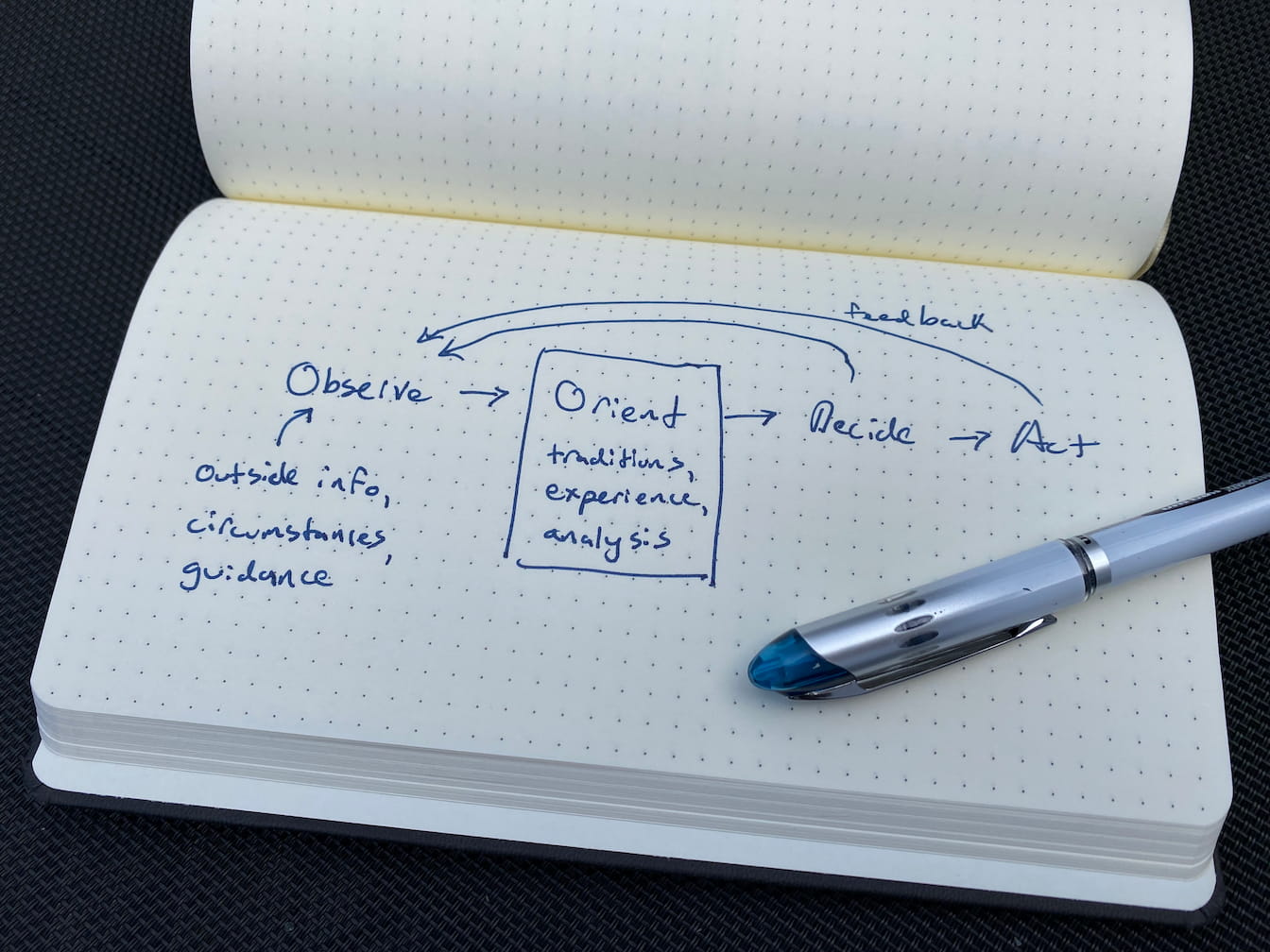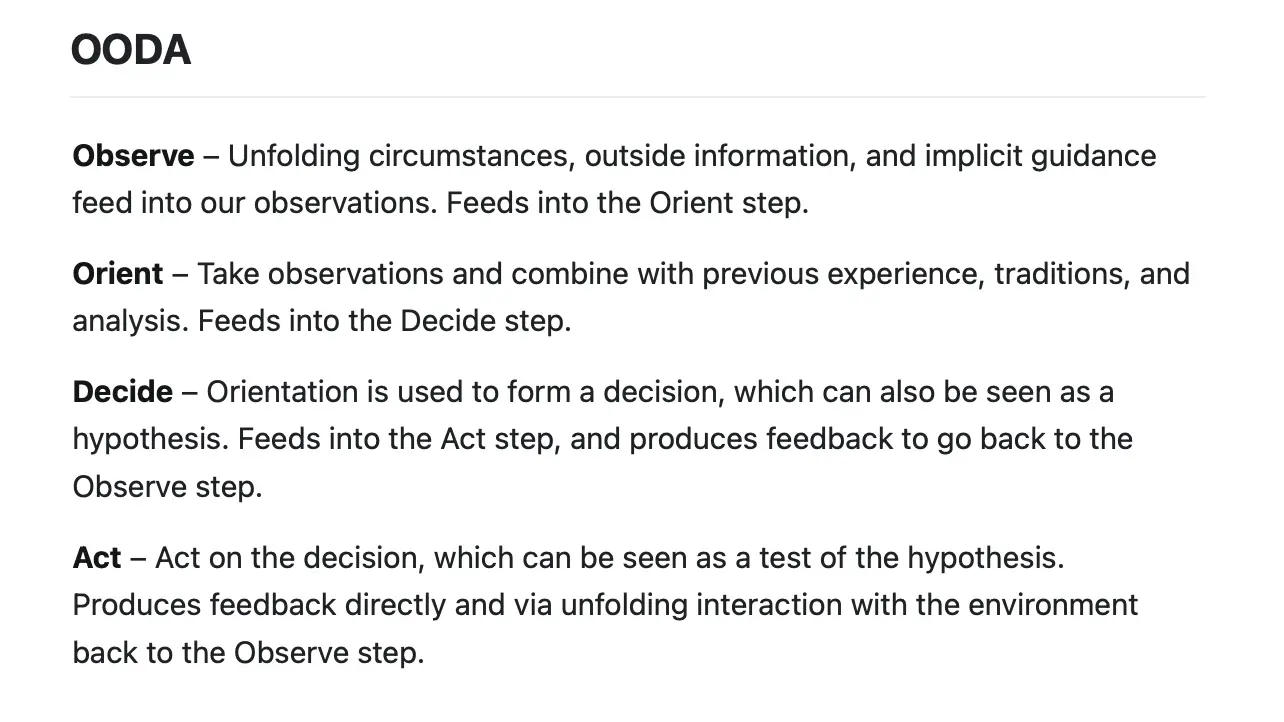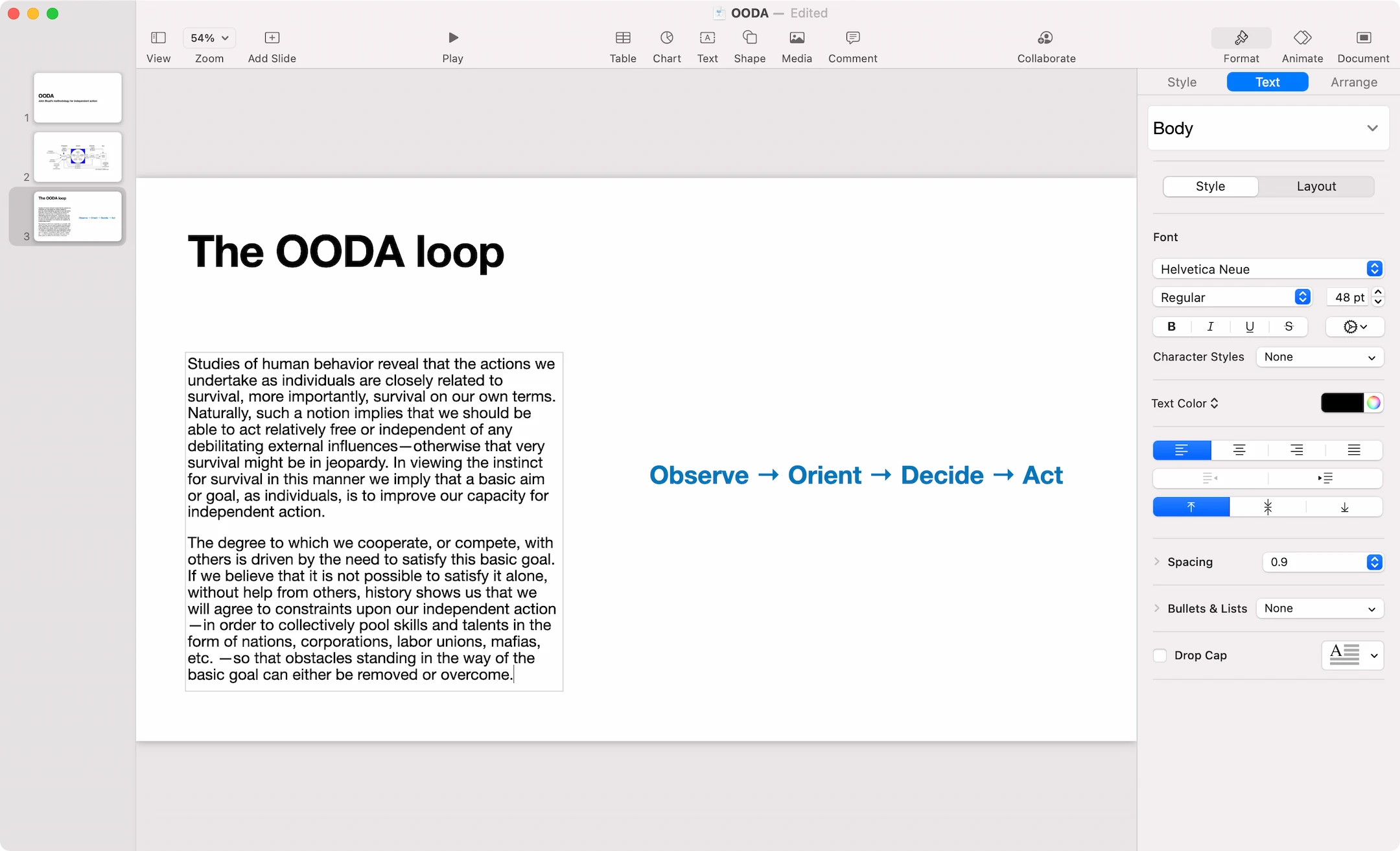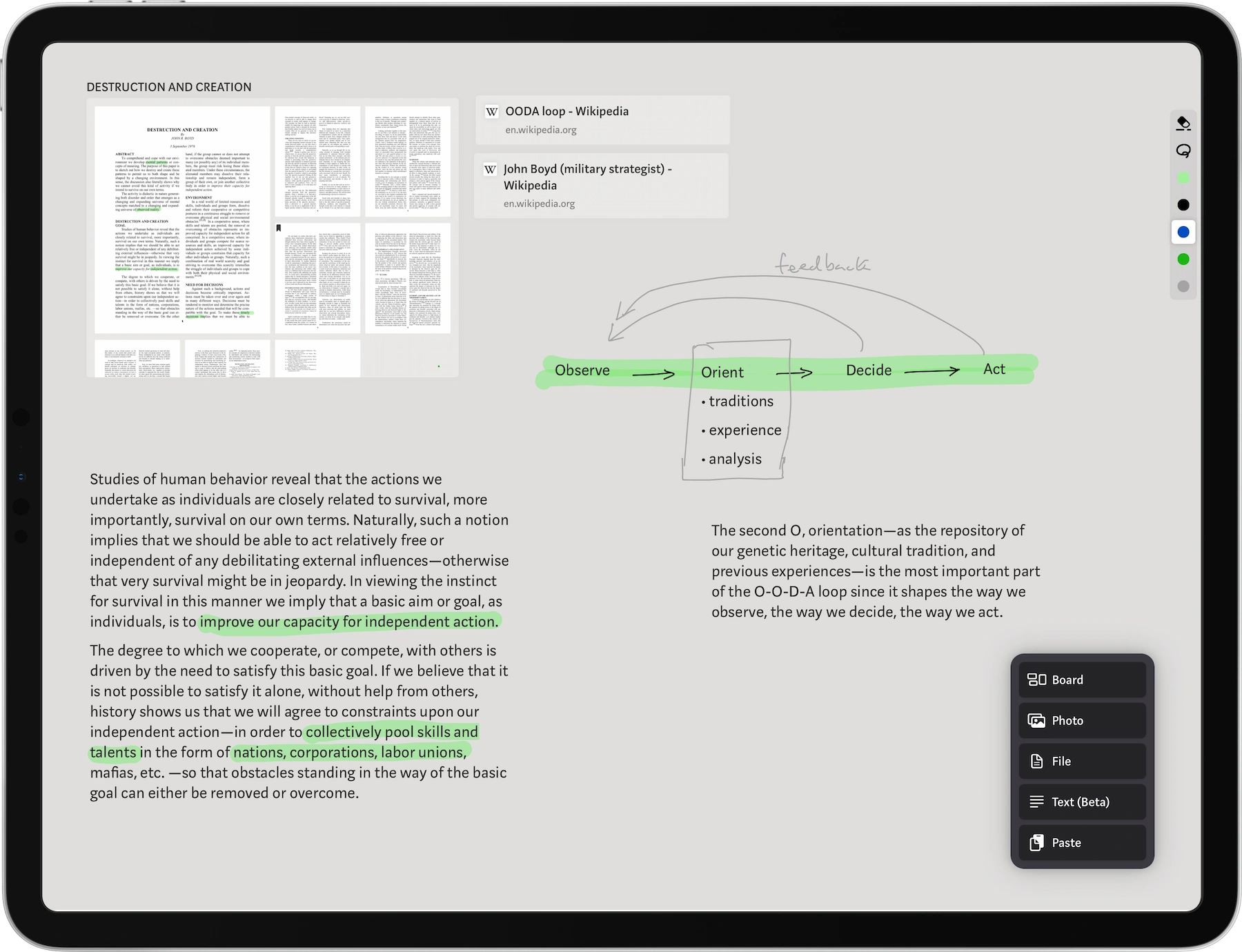Text blocks
Text blocks are now available as an early beta to all Muse Pro members. Type directly onto your Muse boards with Notion-style blocks that can be chained together and freely reordered.
Bringing together the freeform spatial model of Muse with long-form text support poses many design challenges. Read on for details, and jump to the end for how it works and how to try it.
Writing things down is the original tool for thought. Over the millennia humans have developed an array of interlocking methods and tools for externalizing ideas and knowledge, from alphabets to clay tablets to fountain pens and paper to post-its and whiteboards.
Computers, software, and the internet catapult us us into a whole new world of transferring ideas and knowledge out of our minds and onto a virtual page for storage or transmission to others or our future self.
In analog thinking tools, it’s typical to freely mix the symbolic representation of written language with the visual or spatial elements of a sketch, a map, a diagram, or simply placing two items near each other to indicate a relationship.

A sketchbook rendering of the OODA process. Text is freely mixed with spatial elements, such as representing time as flowing from left to right in the diagram.
Computers have always been far more capable with symbolic representation (plain text, rich text, or programming code) compared to spatial or visual representations. Even something as simple as putting two ideas side-by-side — trivial to do with loose pages or sketching on a chalkboard — is a challenge with standard software like text editors or word processors.

OODA described purely in long-form text.
Drawing tools like Photoshop, whiteboarding tools like Miro, and presentation tools like Keynote offer the ability to represent ideas spatially and visually. But text manipulation capabilities in these environments is usually minimal, focused mostly on short labels rather than longer stretches of text. Imagine trying to write an email or web article using the text tool in Keynote.

The text tool in Keynote is intended for short labels or bullet points, but becomes clumsy for long-form writing.
Muse is squarely on the side of spatial and visual, since we think this style of expressing ideas is underrepresented in digital tools. Yet we also acknowledge the power of longer-form writing. Facing this duality, we're trying something we haven’t seen anywhere else before: a tool that can be both spatial and freeform, and have first-class support for text entry and editing.

Using the Muse text blocks beta to write longer-form text, yet arrange ideas spatially.
It’s our hypothesis that — if we can get it right — this might produce a more powerful tool for thinking than either text-first tools or spatial+visual first tools.
What are text blocks?
Computational notebooks like Observable use a concept of stacked cells, like a spreadsheet that only goes vertically. You can put text into a cell; if you used no code cells, the notebook would look and work very similar to a conventional word processor or text editor.

Three cells in a computational notebook: rich text, a plot, and a code cell.
Notion and later Roam, Craft, and others have built on this idea as “text blocks.” Rather than the stream-of-characters concept that we know from age eternal in computer text editors, blocks can be manipulated as atomic units.
Notion’s transition between character-select mode to block-select mode.
This difference, seemingly a subtle one at first, offers an affordance for powerful new features. For example: adding multimedia elements like images, video, bookmarks, or even inline file attachments like PDFs was either not possible or very clumsy in traditional word processors. Images were treated as large “characters” in the stream, leading to clumsy interactions. Blocks make a variety of media types possible, that can all be manipulated in the same way.
Though the interaction models are dramatically different, Muse’s cards are similar in many ways to Notion’s blocks. It creates an atomic unit, a container for all types of content you might want to store — not just text. And your ability to manipulate, link to, or even programmatically reference these units therefore becomes more composable.
About the beta
As a Pro member, you can opt-in to the beta inside Muse. Now anything that creates a text card (including pressing ⌘-N on a hardware keyboard) will create a text block in the upper-left of the current board.
Entering, reordering, moving, and resizing text blocks in Muse.
Pressing enter starts a new block, and blocks in a vertical stack are chained together. You can drag to reorder, drag out individual blocks, or quasimode double-tap to select and move the whole chain together.
This is an experiment — the first version is rough. And the big risk here is that bringing together long-form text and a spatial, freeform environment will produce the worst of both worlds rather than the best.
Give it a try, and let us know what you think. We’re looking forward to hearing from you on whether this is a product direction worth further investment.
Update: we’ve released this beta feature as part of Muse 2.0 and it's now the default for all Muse users.
